
2. Art Nouveau and Bionics in creativity of Gaudí
Antoni Gaudí has highly individual and distinctive style. This style combined art nouveau forms, bionics, neo-gothic elements and aesthetics, religious symbology.
It was a period of Art Nouveau architecture. It was a first half of 20’th century. Nobody knew about bionics in this period. Nobody worked in this style in 20’th century. Architectural style of Gaudí’s works is Art Nouveau (Catalan modernism in Spain). But Antoni Gaudí was a first who combined this style with bionics forms and constructions.
2.1 Art Nouveau forms in buildings of Gaudí
Art Nouveau were most popular during 1890–1910.
This style was inspired by natural forms and structures, not only in flowers and plants but also in curved lines. Architects tried to harmonize with the natural environment.
Main architectural elements and features: hyperbolas and parabolas in windows, arches, and doors are common; decorative mouldings 'grow' into plant-derived forms.
Art Nouveau had actually managed to create an international decoration-based style. This was possible because of a brilliant and energetic contingent of artists and designers who were intent on creating an art form that suited the sensibilities of the modern age. This was the period in which contemporary urban life was established - a period in which old habits, customs and artistic styles learned to coexist with new ones. A number of the artists, designers and architects of this age drew inspiration from the newly emerging technologies and lifestyles.
 Some
essential features of Art Nouveau and Gaudi’s style were: an
anticlassical language inherited from Romanticism with a tendency to
lyricism and subjectivity; the determined connection of architecture
with the applied arts and artistic work that produced an overtly
ornamental style; the use of new materials from which emerged a mixed
constructional language, rich in contrasts, that sought a plastic
effect for the whole; a strong sense of optimism and faith in
progress that produced an emphatic art that reflected the atmosphere
of prosperity of the time, above all of the esthetic of the
bourgeoisie.
Some
essential features of Art Nouveau and Gaudi’s style were: an
anticlassical language inherited from Romanticism with a tendency to
lyricism and subjectivity; the determined connection of architecture
with the applied arts and artistic work that produced an overtly
ornamental style; the use of new materials from which emerged a mixed
constructional language, rich in contrasts, that sought a plastic
effect for the whole; a strong sense of optimism and faith in
progress that produced an emphatic art that reflected the atmosphere
of prosperity of the time, above all of the esthetic of the
bourgeoisie.
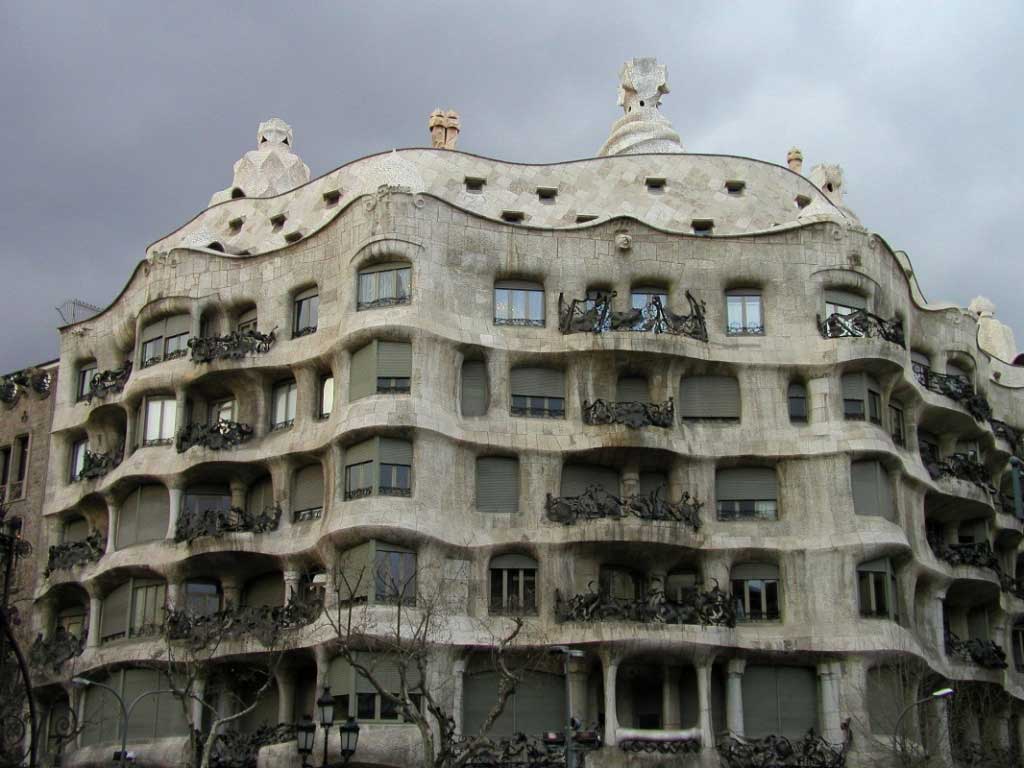
Casa Milà, Antoni Villa Majorelle, Henri Sauvage
Gaudi’s designs from about 1903, the Casa Batlló (1904–1906) and Casa Milà (1906–1908), are most closely related to the stylistic elements of Art Nouveau. Here we find such characteristics of Art Nouveau style: parabolic design of arches, irregular oval windows. The goal of the designer was to avoid straight lines completely. Much of the façade is decorated with a mosaic made of broken ceramic tiles that starts in shades of golden orange moving into greenish blues.
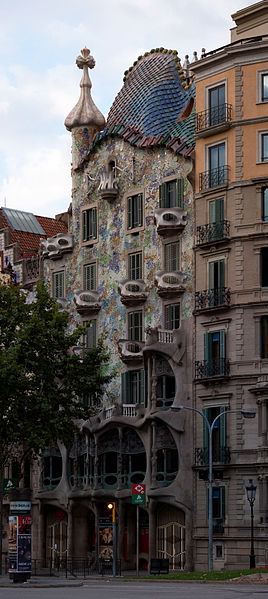
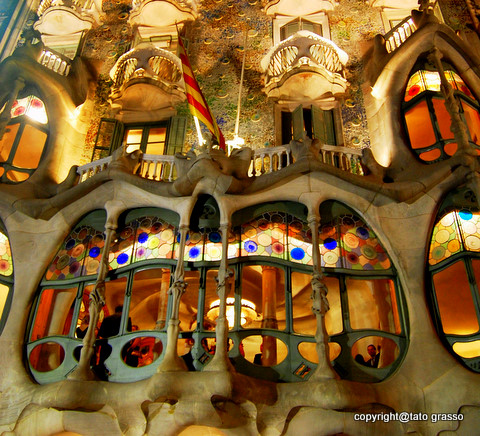
Casa Batlló
Casa Milà
Antony Gaudi designed this building with one purpose in mind and that was to transform it into an enormous showcase for all tipes of art, an idea that was closely linked to Modernist thinking. Thus, painting, architecture, wrought iron and marquetry can all be found inside the Casa Milà as well as on the façade.
This building located on the Paseo de Gracia. At the beginning of the 20th century, this avenue was a privileged place indeed and housed some of the most beautiful examples of Art Nouveau architecture.
Gaudí drew up the plans for an original building with wavy lines that are full of movement and which for many bring to mind an immense mass of stone, thanks to which it is known all over the world as La Pedrera (the stone quarry).
T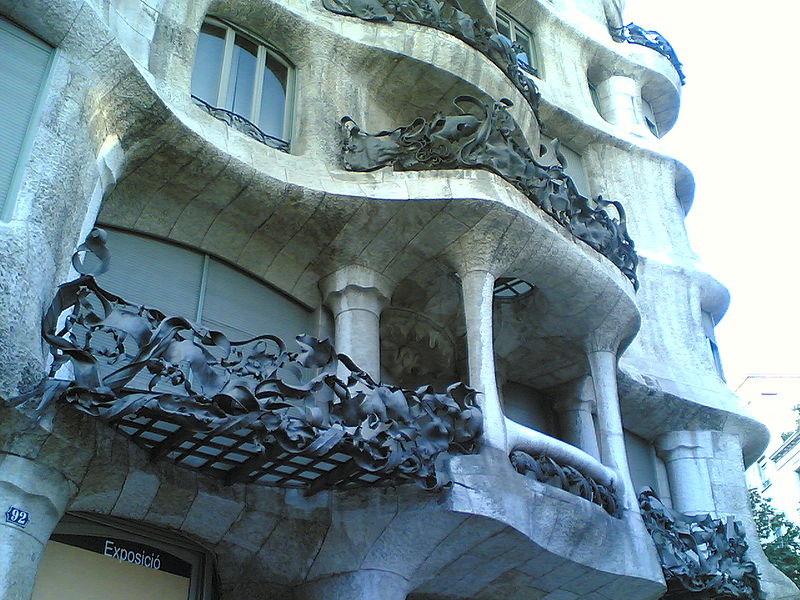 he
architect chose vegetative forms when designing the railings and main
entrances. It is one of the features of Art Nouveau style as well as
the wavy lines of façade and windows.
he
architect chose vegetative forms when designing the railings and main
entrances. It is one of the features of Art Nouveau style as well as
the wavy lines of façade and windows.
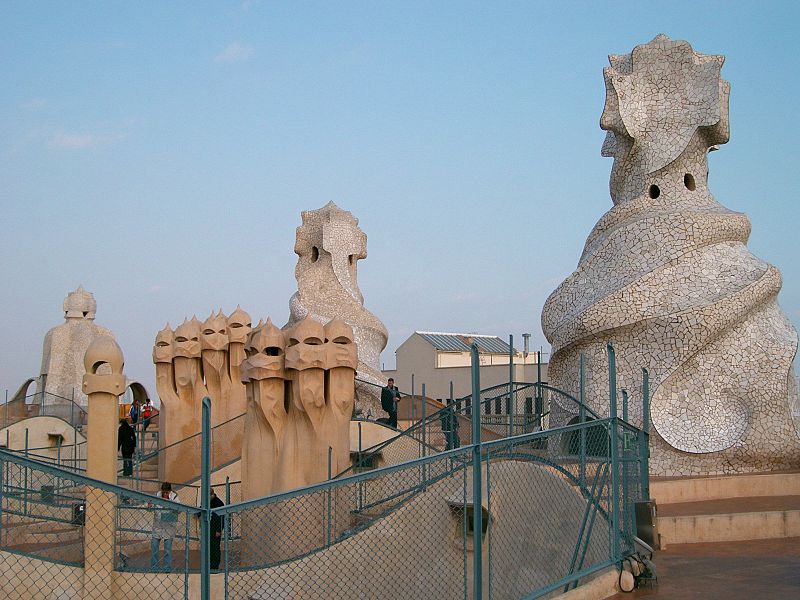
The sculptures in the roof
The balcony of the Casa
Milà
One of the most interesting areas of Casa Milà is the roof, which was designed on many levels. Here the most interesting features are the chimneys, which have been attributed with many different symbolic meanings: warriors, sculptures and tubes twisted into the form of whirls of smoke. These constructions can be found individually and placed in groups of two, three and four.
